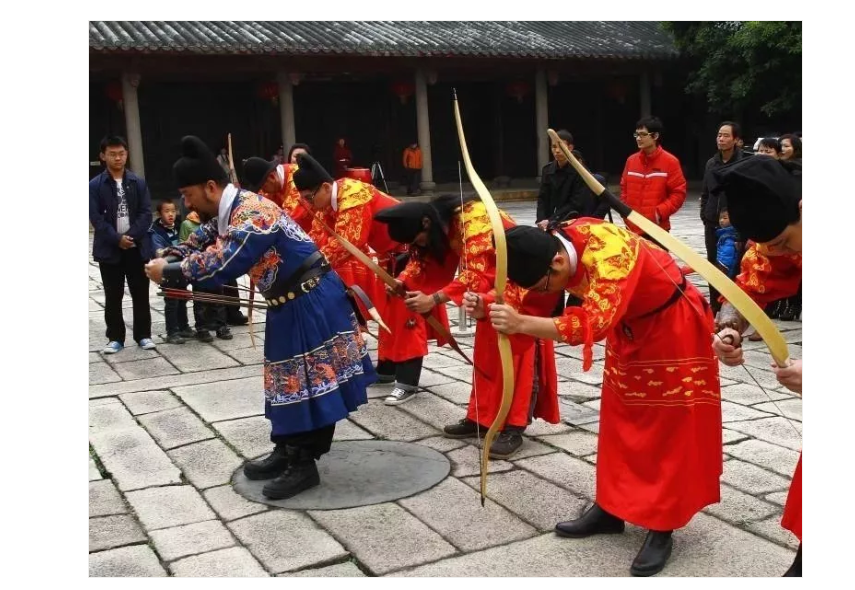Release time:2025-09-04 15:47:25Clicks:author:SPG ArcheryMain categories:Bows, Arrows, Archery Accessories

Chinese archery is divided into two major systems: "Wu She" and "Cheng She."
"Wu She" focuses on martial arts, with military combat and hunting as its objectives. It emphasizes the archer's skill and the lethality of the bow. It prioritizes the outcome of the competition, with winners determined by the number of arrows hitting the target and the lethality. Today, Western Olympic archery and compound bow hunting fall under this category of military sports.
"Cheng She," also known as "Cheng She" or "Cheng Yi," is one of the ancient "Six Arts of a Gentleman." It centers on ritual and emphasizes virtue. Through the medium of "teaching through archery," it strengthens the archer's humanistic ideals of "harmony of mind and will" and "harmony of the world" in society, fulfilling the archer's original aspirations of "cultivating oneself, regulating the family, governing the state, and pacifying the world." It emphasizes the technical standards of "upright inner aspirations and upright outer forms," focusing on the process of competition. Winners are determined by the archer's inner cultivation and ceremonial techniques. The ritual archery system of "Xiangshe, Binshe, Yanshe, and Dashe," established since the pre-Qin period, embodies the Chinese nation's ethical norms and humanistic spirit of "harmony under heaven." Japanese Kyudo, deeply influenced by Chinese ritual archery today, falls under this category of humanistic sports.
1. The Cultivation of the Archer
Archery cultivates the archer's spirit through the practice of exercise, rather than cultivating virtue through forced, restrained movements. All postures during archery are based on the idea of uprightness: knees, shoulders, elbows, and hands are all held in a straight position. The application of force in archery should be gentle, steady, and gentle, cultivating a sense of discipline and dispelling rough, reckless, and reckless tendencies. Archery requires composure, patience, and courage, cultivating composure in the face of danger and a steady mindset when encountering difficulties, enabling one to face them with patience and courage. Rejoicing when a target is hit, and not worrying when a target is missed, can cultivate a sense of concern for gains and losses. Therefore, the ancients said: "When shooting, one must remain calm, without emotion, with balanced limbs, controlled breathing, and focused mind." These actions directly cultivate virtue and refine one's temperament, allowing the habit of shooting to develop naturally rather than through forced effort. The primary goal of archery practice is to learn the humanistic spirit emphasized in the Chinese martial art of archery. This should guide the archer's external movements and internal state of mind during the process. Furthermore, the principles of "inner will upright, outer body straight" and the attitude of "focused unity" should be applied to work and life, regulating one's words and deeds, stimulating potential, honing the mind, enhancing spiritual cultivation, and achieving life goals. As the saying goes, the Way of Archery is the Way of Life, and this is the original intention of the ancients to combine teaching with archery, and to practice shooting as a means of self-cultivation. Archers must consistently adhere to this principle, experiencing and applying it.
2. Archery and the Mind
The ancients said, "The ultimate is your strength; the ultimate is not your strength!" While archery primarily involves physical activity, ultimate success lies in the exercise of the mind. The primary application of the mind in archery is observation. The location of the target, the distance the archer will be standing, the weather and wind direction, the strength of the bow, and the bow's deflection must all be carefully calculated before one can even begin to shoot. The second step is thinking. After observation, various considerations must be made to determine the shooting process. The third step is planning. The results of observation and thinking should be used to formulate a plan for the intended course of action. For example, if the wind is from the east, which direction should the arrow be tilted slightly? If the arrow flies high or low, how should it be corrected? If the arrow flies to the left or right, how should the force be applied? The fourth step is judgment. Judgment involves decisiveness. Before releasing the arrow, one should be patient and resolute. However, once everything is in place and the time is right, the moment of release arrives, decisive action must be taken. Never hesitate or let go, as the saying goes, "A slight delay in releasing the arrow will cause the arrowhead to veer off course, and the target will be missed."
3. Archery and Aesthetics
The ancients pursued the beauty of a gentleman from the inside out. Neatness, cleanliness, uprightness, peace, composure, and tranquility are all essential. Correct posture is essential for beauty. Correctness means being natural, and natural forms are never unattractive. Conversely, unnaturalness leads to affectation, which can easily lead to falsehood or, unconsciously, to a nauseating effect. The concept of beauty can cultivate humanity's highest emotions, elevating the spirit and encouraging good and avoiding evil. Correct archery posture enhances beauty and fosters noble aesthetic sensibilities. Furthermore, the movements of archery are peaceful rather than violent, creating a solemn and tranquil appearance, also conducive to aesthetic cultivation. Archery is often practiced in public squares, amidst trees and grassy areas, where the air is fresh and refreshing, also creating conditions conducive to aesthetic cultivation. Adding music to such an environment, accompanied by singing by the archer, creates even greater beauty. Human nature inherently carries a tendency toward barbaric behavior, yet the essentials of human social life necessitate peace and harmony. The beauty of an archer is not only a state of mind advocated by philosophers such as Confucius, but also a goal pursued by archers.